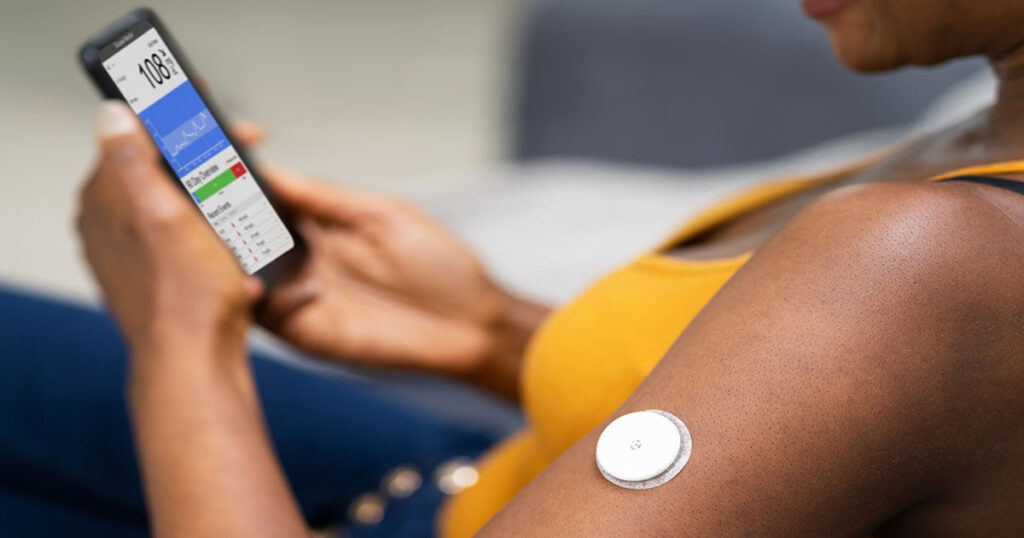Real Time Continuous Glucose Monitoring (rtCGM) and Self-Monitoring of Blood Glucose (SMBG): Impact and Challenges in Pediatric Type 1 Diabetes
Effective management of Type 1 Diabetes (T1D) in children and adolescents relies heavily on accurate and frequent glucose monitoring.
This study explores the advantages and limitations of Real Time Continuous Glucose Monitoring compared to SMBG in Saudi Arabian T1D patients, analyzing their impact on a range of critical factors including glycemic control, hypo- and hyperglycemic episodes, exercise routines, quality of life, and psychosocial well-being.
Tip: Please fill out the form if you or a friend would like more information on continuous glucose monitoring devices.
Introduction:
Maintaining optimal blood glucose levels in children and adolescents with T1D is essential for preventing long-term complications and ensuring healthy development.
Traditionally, SMBG, involving fingerstick blood tests throughout the day, has been the standard method for glucose monitoring.
However, the emergence of Real Time Continuous Glucose Monitoring has revolutionized T1D management by providing continuous, real-time glucose data through a small sensor inserted under the skin.
This study delves into the benefits and drawbacks of these two contrasting approaches to explore their potential in optimizing T1D care for young patients.
Must Read CGMs in noncritical care hospitals optimizes glycemic control
Methodology:
A quantitative, cross-sectional study was conducted at the Pediatric Endocrine Outpatient Clinic, King Abdulaziz University Hospital, between July 2022 and March 2023.
The study recruited 123 children and adolescents (2-18 years) diagnosed with T1D, using either Real Time Continuous Glucose Monitoring or SMBG for at least three months with regular follow-ups within the past nine months.
Data collection involved comprehensive clinical interviews and analysis of medical records, including HbA1c levels, insulin pump data (where applicable), and documented hypoglycemic and hyperglycemic episodes.
Additionally, participants completed validated questionnaires assessing quality of life and psychosocial factors like anxiety and diabetes distress.
Results:
Of the 121 participants who completed the study, Real Time Continuous Glucose Monitoring users exhibited significantly lower mean HbA1c levels compared to SMBG users, indicating improved long-term glycemic control.
They also experienced a notable reduction in the frequency and duration of hypoglycemic episodes, suggesting a lower risk of associated complications.
Furthermore, rtCGM users reported maintaining more stable blood glucose levels during exercise, enabling them to participate in physical activities with greater confidence and reduced fear of hypoglycemia.
Read Guide about Wegovy Dosage Guide: The Best Way For Weight Loss
Interestingly, positive impacts were observed beyond glycemic control, with Real Time Continuous Glucose Monitoring users reporting improved sleep quality and lower levels of anxiety compared to their SMBG counterparts.
This suggests a potential for Real Time Continuous Glucose Monitoring to enhance overall well-being and psychosocial adjustment in children and adolescents with T1D.
Discussion:
The findings of this study highlight the significant potential of Real Time Continuous Glucose Monitoring in revolutionizing T1D management for young patients.
Its ability to provide continuous glucose data empowers informed decision-making regarding insulin adjustments, leading to improved glycemic control, reduced hypoglycemia, and a greater sense of freedom and confidence in daily activities.
Additionally, the observed improvements in sleep quality and anxiety suggest a broader positive impact on psychosocial well-being, a crucial element for optimal T1D care.
However, it is important to acknowledge the limitations of Real Time Continuous Glucose Monitoring. Sensor accuracy issues, adhesive difficulties, and the high cost of the technology remain challenges that require ongoing research and development.
Conclusion:
While both rtCGM and SMBG remain valuable tools for T1D management, this study provides compelling evidence for the potential of rtCGM to significantly improve clinical outcomes and quality of life for children and adolescents.
Also, read about Can Diabetes Be Reversed?
Continued research and development efforts should focus on addressing cost barriers, enhancing sensor accuracy and user experience, and optimizing educational initiatives to maximize the benefits of rtCGM for pediatric T1D care.
Additionally, further studies are needed to explore the optimal integration of Real Time Continuous Glucose Monitoring with other technologies and therapies to ultimately achieve personalized and comprehensive T1D management for every child and adolescent.


